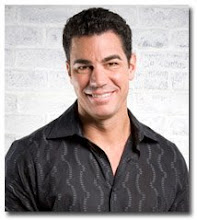Weight Loss - Myths and Reality
Few commercialized areas of science are so filled with myths as that focused on weight loss. Everyone wants a simple, safe, no-willpower solution. Someday, we may actually get one. For now there are no magic cures. But there are quite a few myths that need to be exploded.
You may have read this one: eating ice cream actually causes weight loss. The so-called theory is that since ice cream is cold, and it takes energy (measured in calories) to warm it up, your body is consuming energy while eating.
Your body does certainly require energy to warm up ice cream, and even to digest it. Any action the body takes requires energy, that's basic physics applied to physiology. But the devil is in the details. Eating ice cream, usually high in fat and sugar, takes in far more calories than are used to warm and digest it. Sorry, you still need to go easy on the dessert.
Sometimes ice water is substituted in the myth. True it has no calories, so you're much better off. But the energy needed to warm it to body temperature is negligible in terms of the weight loss effect. However, sometimes you feel hungry when in fact the body is just slightly dehydrated. Drinking water can cause you to feel less hungry, and it's much lower in calories than regular soda or even orange juice.
Or, you might have heard this one: adding a pound of muscle makes the body burn an extra 50 calories. Not only not true, but meaningless. 'Burns 50 calories' over how long? Just sitting consumes about 70 calories per hour. The body is consuming energy to maintain internal temperature, repair cells, pump blood, etc.
A pound of new muscle will burn at most a dozen calories per hour. Still, adding muscle is a good idea, since to do so requires high effort - either through running, weight training or other vigorous exercise. Mild exercise, such as walking, is good but tones more than builds muscle. The average man will burn about 350 calories in an hour long workout.
Vigorous exercise also raises the metabolic rate for a day, burning about 250 calories more than if one hadn't exercised. A brisk walk will do so also, but at a much lower level. It's still a good idea to workout every other day and walk on the non-workout days. It keeps the muscles toned, stretched and helps prevent the lactic acid buildup that causes sore muscles.
The reality is that if you take in more calories than your body uses the remaining energy is stored, generally in the form of chemical bonds in fatty tissues. When the body requires more energy that you've supplied, it will turn to those fat stores in order to get some needed energy. That leads to lower fat in the body and weight loss. That reality is best achieved by the old-fashioned combination of proper diet and adequate regular exercise.
For more information:
http://www.mynutritionstore.com/diet



0 Comments:
Post a Comment
<< Home